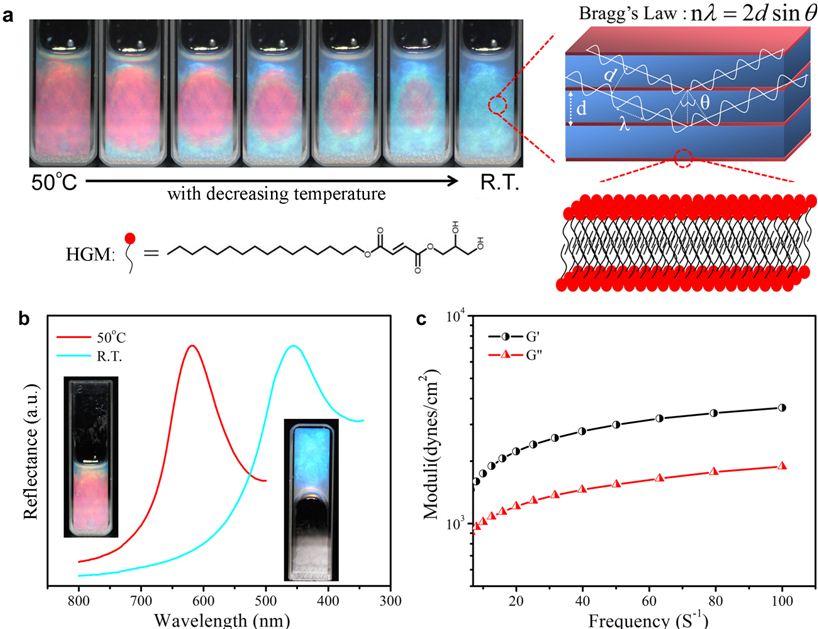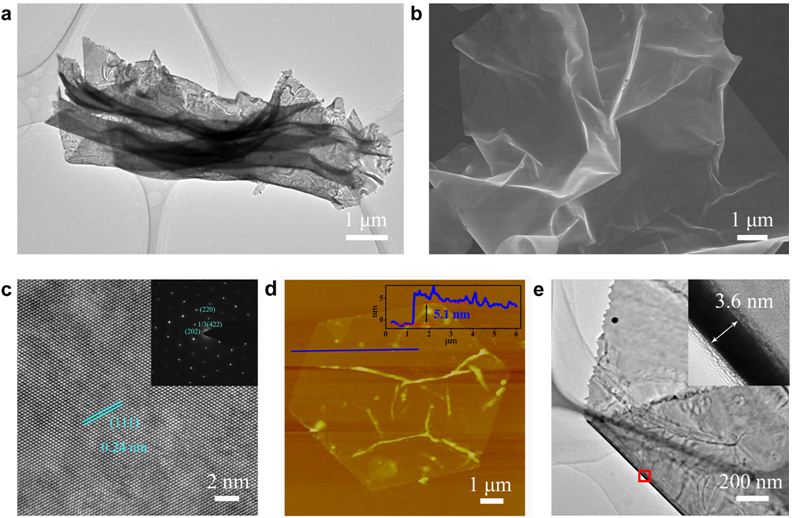Metal and semiconductor nanomembranes (NMs) are monocrystalline structure with thickness of less than one hundred nanometer and with minimum lateral dimension at least two orders of magnitude larger than the thickness. Due to the nature of high anisotropy, NMs offer many features that cannot be reproduced in other material formats. They are of central importance to a rapidly expanding frontier in nanoscience and nanotechnology. Inspired by the intriguing one-atom-thick structure and amazing physical properties of graphene, much effort has been devoted to the synthesis of other types of non-carbon two dimensional (2D) nanomaterials and the exploration of their unique properties arising from 2D effects. However, compared with materials having intrinsically layered crystal structures such as MoS2、GaN、MxM1-x(OH)2 et al., the controlled synthesis of 2D nanomaterials with a nonlayered structure is still underdeveloped and greatly challenging to date.
Recently, Dr. Jin jian’s research group at Suzhou Institute of Nano-Tech & Nano-Bionics, Chinese Academy of Sciences (SINANO), reported utilizing a novel liquid crystal system with a lamellar structure as template to synthesis the 2D nanomaterials. This system is composed of nanometer-thick water layers sandwiched by lamellar bilayer membranes of self-assembled surfactant molecules. Compared with traditional soft-template method, the template used here has a water layer can be precisely tuned by adjusting the concentration of surfactant molecule, which could benefit the synthesis of 2D nanomaterials with large area. As a result, large-area, ultrathin single-crystalline Au nanosheets with well-tuned thicknesses were successfully prepared. The investigation of surface plasmon polaritons (SPPs) on a patterned Au nanosheet with thickness of 40 nm revealed a much longer propagation length than in polycrystalline deposited films (J. Am. Chem. Soc. 2013, 135, 12544).
Based on the above work, the group further designed the molecular structure and got the particular hydrogel with lamellar structure. The origin of hydrogel is ascribed to the strong hydrogen-bond force between the surfactant molecule and the water, which effectively restrain the flow of water. This particular lamellar hydrogel was used as a soft 2D template to guide the growth of 2D single-crystalline Au sheets. Free-standing, ultrathin (3.6 nm) and ultralarge (>100 μm2) single-crystalline Au membranes with atomically smooth surface were successfully synthesized, and exhibited interesting optical and electrical properties (Nat. Commun. 2014, 5, 3313).
These works were supported by the National Basic Research Program of China (grant No. 2013CB933002), the National Natural Science Foundation of China (grant No. 50973080, 21273270).

Figure 1. Color and structure characterization of HGM hydrogel.(Image By SINANO)

Figure 2. Morphology and structure characterization of ultrathin Au membrane.(Image By SINANO)
downloadFile
